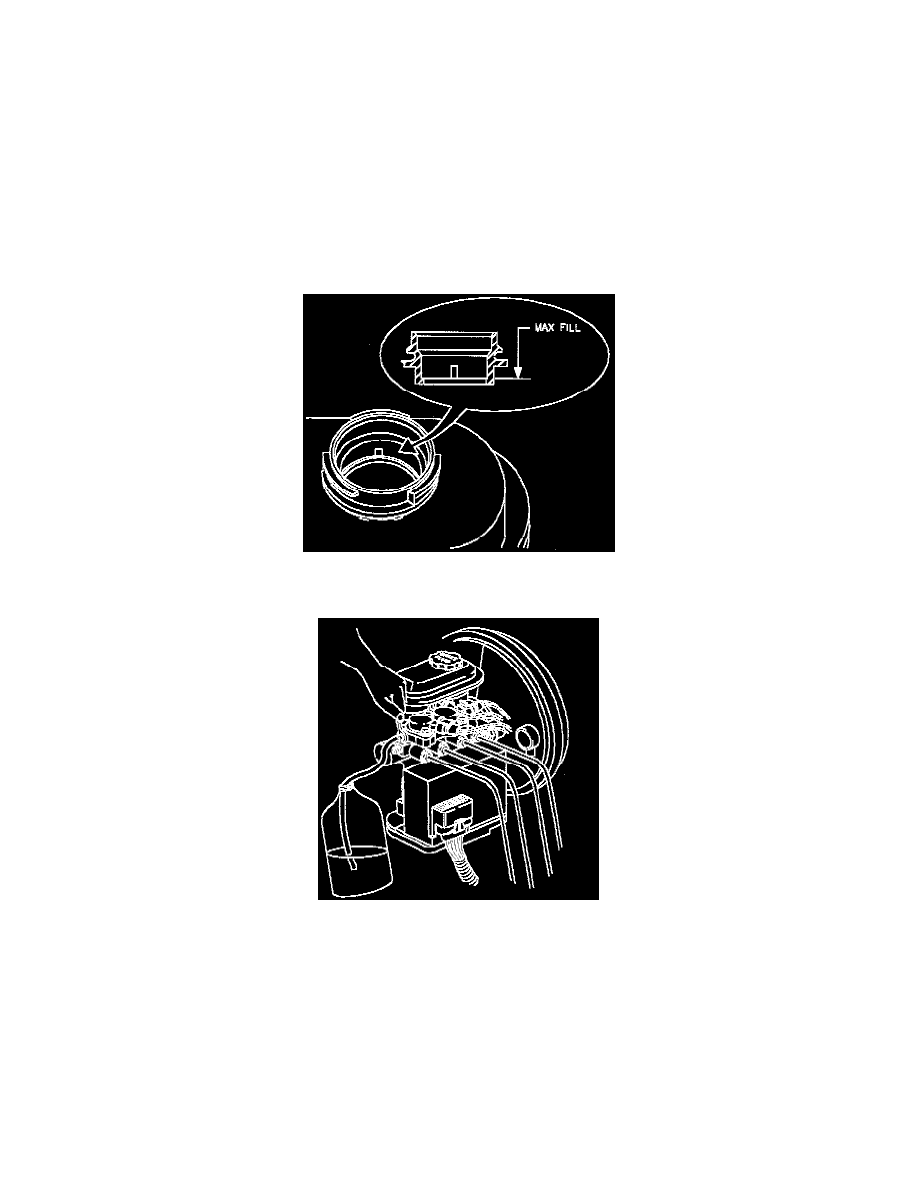SW2 L4-1.9L DOHC VIN 7 (1997)

a. Make several normal (non-ABS) stops from a moderate speed.
b. Make one to two ABS stops from a higher speed at approximately 80 km/h (50 mph).
11. After road testing the vehicle, it is recommended that the system be bled again following the steps 1 through 7 and then inspected again. If after
inspection the pedal feels firm and constant and pedal travel is not excessive, system is properly bled.
Manual Bleeding
CAUTION:
^
Use only DOT 3 brake fluid from a clean, sealed container. Do not use any fluid from a container which is wet with water. Do not use DOT 5
silicone fluid.
^
Prior to bleeding the rear brakes, the rear displacement cylinder pistons must be returned to the top most position or HOME. To return the pistons
to home (top most position), use the PDT, or equivalent to perform SPECIAL TEST, RUN ABS MOTORS, PISTON UP-HOME. This test will
run the piston to the top of their travel.
1. Clean brake fluid reservoir cap and area around cap. Remove cap.
2. Fill the master cylinder reservoir with clean brake fluid and keep reservoir at least one half full during the bleed operation.
3. Install fluid reservoir cap.
4. Prime the brake master cylinder and modulator assembly:
a. Attach a transparent tube over the rear modulator assembly bleeder valve and allow the tube to hang submerged in a clean container partially
filled with brake fluid.
b. Slowly open bleeder valve 1/2 to 3/4 turn.
c. Depress brake pedal slowly and hold until fluid begins to flow.
d. Close valve and slowly release brake pedal.
^
Torque to 7 Nm (62 inch lbs.)
e. Repeat steps a through d for the front modulator assembly bleeder valve.
NOTE: Once fluid is seen to flow from both modulator bleeder valves, the master cylinder and hydraulic modulator assembly is sufficiently full
of fluid. However, it may not be completely purged of air. At this point move to the wheel brakes and bleed them. This insures that the lowest
points in the system are completely free of air and then the master cylinder and hydraulic modulator assembly can be purged of any remaining air.
